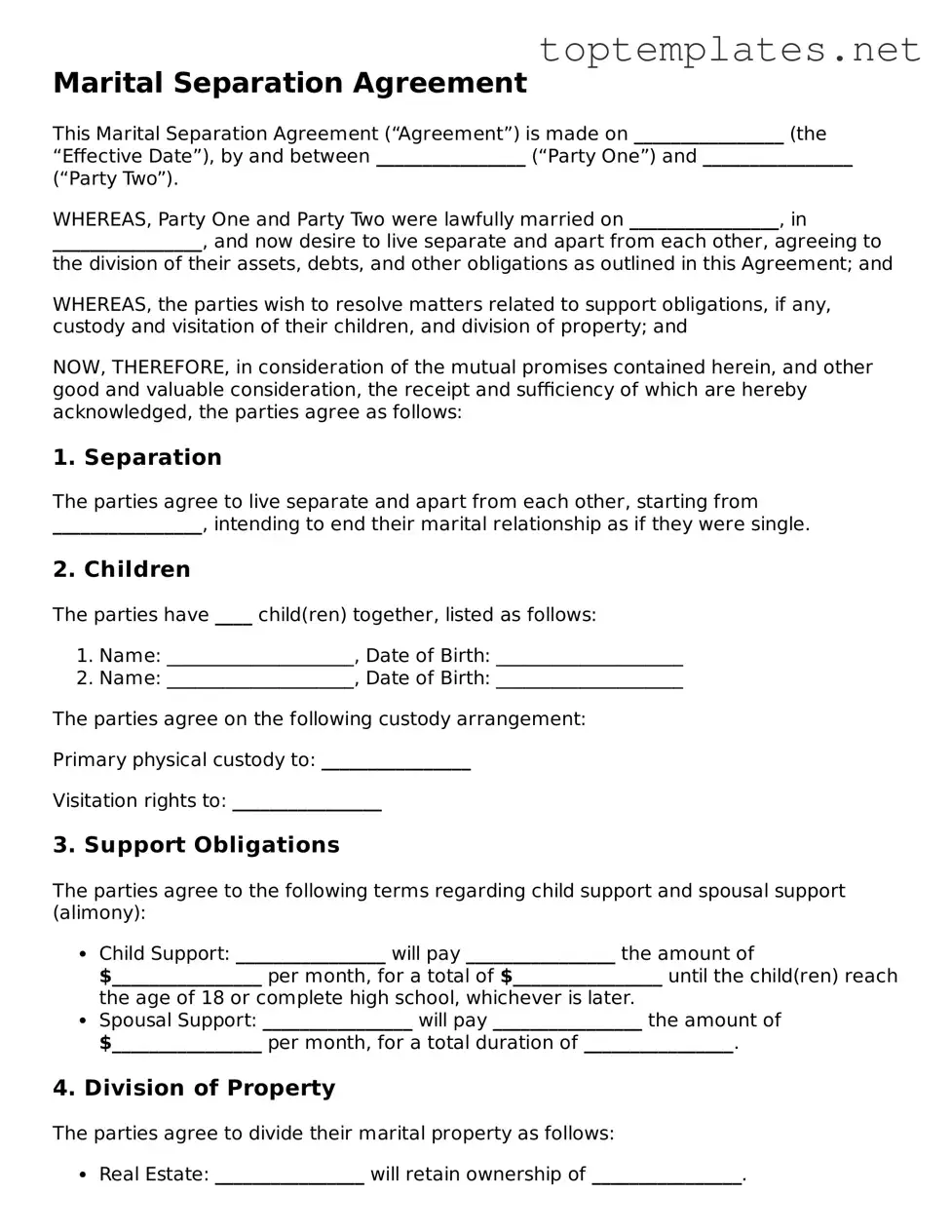Marital Separation Agreement
This Marital Separation Agreement (“Agreement”) is made on ________________ (the “Effective Date”), by and between ________________ (“Party One”) and ________________ (“Party Two”).
WHEREAS, Party One and Party Two were lawfully married on ________________, in ________________, and now desire to live separate and apart from each other, agreeing to the division of their assets, debts, and other obligations as outlined in this Agreement; and
WHEREAS, the parties wish to resolve matters related to support obligations, if any, custody and visitation of their children, and division of property; and
NOW, THEREFORE, in consideration of the mutual promises contained herein, and other good and valuable consideration, the receipt and sufficiency of which are hereby acknowledged, the parties agree as follows:
1. Separation
The parties agree to live separate and apart from each other, starting from ________________, intending to end their marital relationship as if they were single.
2. Children
The parties have ____ child(ren) together, listed as follows:
- Name: ____________________, Date of Birth: ____________________
- Name: ____________________, Date of Birth: ____________________
The parties agree on the following custody arrangement:
Primary physical custody to: ________________
Visitation rights to: ________________
3. Support Obligations
The parties agree to the following terms regarding child support and spousal support (alimony):
- Child Support: ________________ will pay ________________ the amount of $________________ per month, for a total of $________________ until the child(ren) reach the age of 18 or complete high school, whichever is later.
- Spousal Support: ________________ will pay ________________ the amount of $________________ per month, for a total duration of ________________.
4. Division of Property
The parties agree to divide their marital property as follows:
- Real Estate: ________________ will retain ownership of ________________.
- Vehicles: ________________ will retain the vehicle make ________________, model ________________, year ________________.
- Personal Property: The parties will divide personal property, including furniture, jewelry, and electronics, as agreed upon separately in writing.
5. Division of Debts
The parties agree to be individually responsible for the following debts:
- ________________ will be responsible for debt ________________, amounting to $________________.
- ________________ will be responsible for debt ________________, amounting to $________________.
6. Entire Agreement
This Agreement contains the entire agreement between the parties regarding their separation and supersedes any prior understandings, agreements, or representations by or between the parties, written or oral, that may have related to the subject matter hereof.
7. Governing Law
This Agreement shall be governed by and construed in accordance with the laws of the State of ________________, without giving effect to any choice or conflict of law provision or rule.
8. Amendment
This Agreement may only be amended, modified, or supplemented by an agreement in writing signed by each party.
9. Signatures
This Agreement is executed by the parties as of the Effective Date first above written.
Party One: _______________________________ Date: __________________
Party Two: _______________________________ Date: __________________
